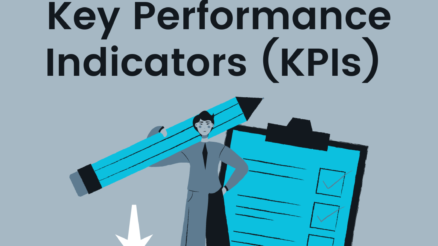Are you preparing to transition your organization or team through a period of significant change?
With any change comes some inherent risk, which can be both exciting and anxiety provoking.
To ensure the success of such an endeavor it’s important to plan for, mitigate and manage risks as they arise throughout the process.
In this blogpost we’ll discuss why business leaders and managers needs to pay attention to potential risks and learn how to conduct change management risk assessment in order to execute a successful transition.
What is Change Management Risk?
The factors which can negatively affect achieving desired change outcome, primarily due to insufficient planning or lack of change-readiness among stakeholders.
Change management risk can lead to delays in implementation and results, increased costs and compromised quality standards, ultimately impacting an organization’s bottom line.
It is essential for organizations to mitigate change management risks by creating a clear change strategy with well-defined objectives, monitoring change goals and gathering feedback from stakeholders along the way.
Why it is important to identify change management risk?
Change is inherent in any business, and change management can be challenging. Adequately assessing change management risks helps to minimize unexpected outcomes, increases efficiency and effectiveness, and bolsters the flexibility of organizational processes.
It is essential that organizations acknowledge the need to identify change management risks, as failure to do so may lead to project delays, budget overruns and costly repair work.
By critically diagnosing change management risk associated with specific projects or events, an organization is better equipped to develop tailored strategies for successful change implementation. Ultimately, change management risk identification is a critical step for ensuring key change objectives are met on time and within budget.
Change Management Risk Assessment
Change management risk assessment is a crucial process for organizations to mitigate the risks associated with change. It involves looking at potential change initiatives, and examining how they may affect an organization’s resources and operations.
The results of change management risk assessment allow us to make well-informed decisions on the implementation and potential success of change initiatives.
To successfully complete change management risk assessment, it is important to determine objectives, analyze relevant data sources, identify risks and their root causes, and create viable response plans.
This is ultimately done through establishing processes that help organizations develop stability during a time of transition, enabling them to achieve successful outcomes more efficiently.
04 Steps to Conduct Change Management Risk Assessment
In order to conduct change management risk assessment, there are several key steps that need to be taken.
Step 1: Define change management risk assessment framework
It is important to have a clear understanding of what the change initiative is aiming to accomplish, as this will inform the risk assessment process. During this step, it is also important to establish a change management risk assessment framework. This framework should provide the foundation for identifying change management risks and understanding their potential impact on the organization.
The change management risk assessment framework should be tailored to the specific change initiative and take into account any existing organizational change processes. This will ensure that all stakeholders are fully aware of the change objectives, can recognize change management risks, and have an understanding of the steps needed to effectively address risk.
Step 2: Analyze data
The second step to conducting change management risk assessment is to analyze data sources. This involves gathering information from a variety of sources such as internal documents, reports, and interviews with stakeholders. It is important to identify the key change components and assess their potential impacts in order to recognize change management risks.
Through data analysis, organizations can gain greater insight into change management risks and their impacts on their operations. Data analysis allows organizations to identify change management risks and the underlying causes, evaluate the solutions available to them, and make informed decisions when managing change initiatives.
Step 3: Identify and analyze risks
The third step to conducting change management risk assessment is to analyze the change management risks identified. This involves understanding their root causes and evaluating their potential impacts on the organization. It is important to identify any assumptions, dependencies, or interdependencies that could affect change management risk assessment outcomes.
Organizations should also assess whether existing change processes are adequate enough toeffectively manage change risk. This includes considering the impact that change initiatives will have on existing structures, processes and systems, as well as understanding the resources available to address change risks.
Step 4: Develop response plans
The next step to conducting change management risk assessment is to develop response plans. This involves formulating strategies and tactics to mitigate change risks, as well as determining possible contingencies in the event that change initiatives do not succeed. During this stage, organizations should identify resources necessary for successful change implementation, such as personnel and technology.
It is important to prioritize change management risks in order to ensure that the most critical risks are addressed first. This involves understanding the potential impact of each change risk on the organization, and identifying which risks should be addressed to mitigate their effects.
What are common risks of change management
Following are some common risks of change management:
lack of understanding or buy-in from stakeholders
The lack of understanding or buy-in from stakeholders is one of the most common change management risks. This risk can arise when stakeholders are not fully aware of change objectives, or do not agree with the change initiatives being undertaken. In such cases, stakeholders may resist change initiatives or take actions that undermine their success.
Inadequate change management practices and processes
Inadequate change management practices and processes can also be a major risk to change initiatives. Organizations must ensure that change strategies are understood, agreed upon, and implemented effectively in order to maximize the chances of change success. Without an effective change management process in place, organizations may find themselves unable to adjust quickly enough to address risks.
Ineffective communication
Organzations often make mistake by having one-way communication with employees and other stakeholders. This is one of the biggest risk of change management. Change is not successful if its message is only coming from top and voices of employees or other stakeholders are unheard. If organizational culture fails to exchange ideas and share experience then it’s hard to implement transformative change.
An excessive change implementation timeline
An excessive change implementation timeline can pose a serious risk to change management, as it often leads to delays, slowdowns, and potential abandonment of change initiatives. When change initiatives take too long to implement, they can become costly and complex affairs that may not yield the desired results.
Inadequate change control measures
Inadequate change control measures are one of the most common change management risks. These typically arise when change initiatives are not reviewed and approved on a timely basis. Without proper change control mechanisms in place, change initiatives can go unchecked and progress without proper risk assessment and validation.
Misaligned change initiatives with organizational objectives
Misaligned change initiatives with organizational objectives can be a major change management risk. When change initiatives are not in alignment with the organization’s overall goals and objectives, they can lead to wasted resources, reduced efficiency, and even failure of the change initiative.
Final Words
Assessing risks is a key component of successful change management. By understanding what could go wrong and taking steps to mitigate those risks, you can increase the chances of your change initiative being successful. There are many different ways to assess risks and some common risks associated with change management initiatives include resistance to change, lack of resources etc. By taking the time to understand these risks and develop a plan to address them, you can set your change initiative up for success. Do you have a plan in place to assess risks to your change management initiative? What are some of the most common risks you’ve encountered during past initiatives?



